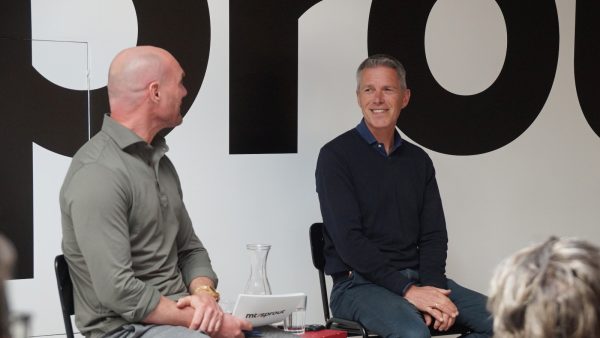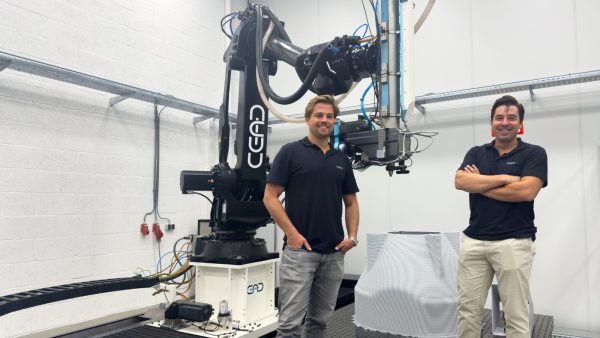Geen producten in de winkelwagen.
Vern Harnish spreekt op 22 mei op de Growth Summit. Sprout-lezers krijgen 50 euro korting op de toegangskaart via de kortingscode SPR13. We’ve observed for decades how market-leading firms eventually fall behind startups because they just couldn’t see the future, what Harvard Business School Professor Clayton Christenson labeled the innovator’s dilemma.
So why do leaders miss seeing sweeping global trends that are about to broadside them? I put a big part of the blame on the standard SWOT analysis used in strategic planning —the age old tool used to identify an organization’s Strengths, Weaknesses, Opportunities and Threats. It’s time to update this methodology.
Inside/Industry Myopia
Almost by definition, the SWOT process drives leaders to look inward at both their company and industry challenges, creating what I term “inside/industry myopia”. The traditional SWOT analysis, while helping executives see the forest and the trees, it tends to lead them to forget that there’s a world outside the forest. The SWOT, with this introspective focus, isn’t the right tool to spot the trends from other industries and distant markets that CEOs need to factor into their plans.
I don’t want to throw the SWOT away. It still has its place in the strategic planning process. It’s an excellent tool for gathering ideas and input from middle managers who are more internally focused and closer to the day to day operations of an organization.
SWT Instead
For senior leaders I propose replacing the SWOT with the SWT—an updated approach that identifies inherent Strengths and Weaknesses within the firm while exploring broader external Trends beyond their own industry or geography.
As I’ve mentioned in a previous column, the strategic planning process comprises two distinct activities: strategic thinking and execution planning. Strategic thinking is coming up with a few big-picture ideas. Execution planning is figuring out how to make them happen.
The traditional SWOT is a great tool for execution planning — the focus of middle management — resulting in a laundry list of accolades and fixes. However, for the senior team, the SWOT can be a trap. It tends to pull executives down into operational issues, distracting them from the much bigger forces around the globe that can take the company by surprise if not prepared.
Inherent Strengths and Weaknesses
To do the right kind of strategic thinking, the senior leadership team needs to use the SWT. What’s different about it?
In the SWT, senior leaders do a deeper dive—and face the brutal facts of their reality, as Jim Collins puts it so well. They need to call out inherent weaknesses that will likely never change—so they can say no to situations that would require the organization to be strong in those areas.
For instance, our children’s school (I’m leading the five year strategic planning process for Ben Franklin International School) will always lack a large corporate or government base from which to draw funds and students given its location in Barcelona vs. Madrid.
At the same time, leaders need to be crystal clear on the inherent strengths or core competencies of the organization that have been the source of its success. For the school, its distinct fashionable location has continually driven enrollment from Silicon Valley entrepreneurs, helping it thrive during one of the worst economic periods in Spain’s history.
Like an individual’s innate strengths and weaknesses, which tend to be baked in by age 5, an organization has the same. So it’s less about changing them and more about playing the hand the firm was dealt.
Trends
In turn, instead of sizing up a company’s immediate opportunities and threats, as the SWOT tends to surface, the senior team should rise above all this and look at the major trends— significant changes in technology, distribution, product innovation, markets, consumer, and social trends around the world that might shake up not only the business but the entire industry?
Forget about the competitor down the street. Is there a company on the other side of the globe that’s going to put you out of business? Is there a new technology coming onto the startup scene that could change the way all companies must do business overnight? Since our school is educating students, some of whom won’t be in the workforce for another decade or two, how is robotics changing the very nature of work?
Mining All Levels
Therefore, to feed the strategic planning process properly, the key is using different techniques to mine ideas from all levels of the organization. From frontline employees, ask one simple question: “what should the organization start, stop, and keep?” From middle management, require a standard SWOT.
And demand the senior team go deeper and broader using the SWT. Knowing what trends are going to shake up your industry—and having a plan for dealing with them—will help you stay ahead of the competition—and sniff out new rivals who want to take over your turf while you can still do something about it.









